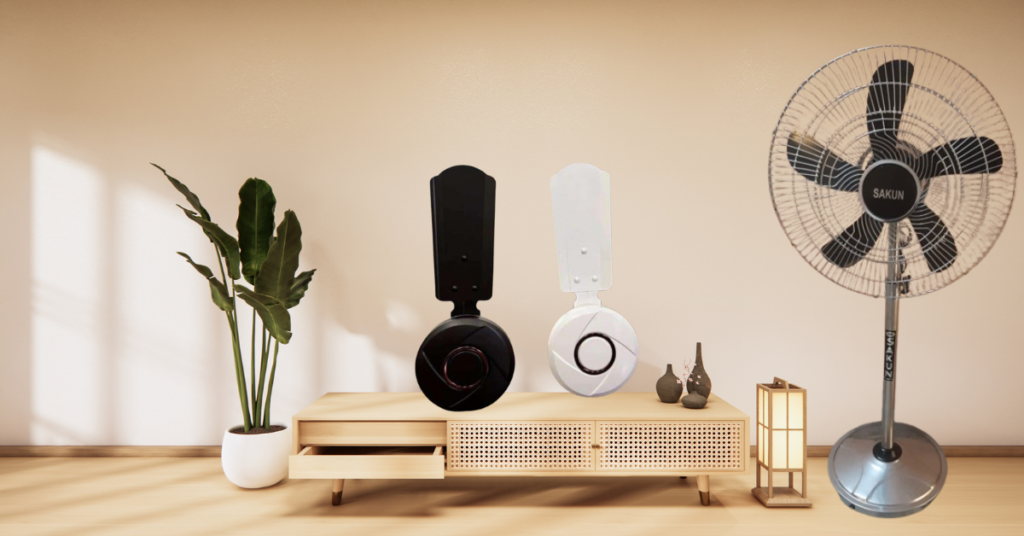Fans like Pedestal fans , Ceiling fans , wall fans transformation
Fans like pedestal fans, ceiling fans , wall fans etc. provide airflow and cooling solutions in homes and industries, now in their second century. It has evolved from a simple mechanical device to an intelligent energy-efficient appliance. The journey of electrical fans from traditional models to smart ones demonstrates the evolution of technology, concern for energy conservation, and consideration for user comfort. This article presents an eternal chronology of electrical fans, touching on aspects such as the history, technological advancement, energy efficiency, and smart fans’ future. Early Designs and Material
The first cooling fans were simply a design. The materials were metal, the blades often exposed, presenting safety hazards. They ranged from desk fans to pedestal fans implying manual movement for directing airflow. Power consumption was much higher than that of modern energy-efficient fans.
Challenges and Limitations
Limited Speed Control: In other words, fixed speeds with no control whatsoever.
High Energy Consumption: Indeed, energy consumption was never under control.
Noise Problems: These ceiling fans were noisy due to simple design principles for the fan motor.
Safety Hazards: Protective grills were absent. Advancements in Fan Technology Over the Decades


Introduction of Oscillating Fans
By the early 20th century, the invention of oscillating fans changed the home-cooling scene. Ceiling fans were designed to move from side to side and therefore helped in better air circulation in rooms. The innovation of fan cages also increased safety.
Development of Multi-Speed Fans
In the 1930s and 1940s, multi-speed fans were developed by manufacturers, which allowed humans to adjust the intensity of airflow. This innovation enabled better cooling and energy savings.
Energy-Efficient Motor Innovations
AC Motors: Alternating Current (AC motors) gained prominence by now, improving fan performance and durability.
DC Motors: Direct Current (DC motors) came into the limelight later, giving a huge cut in energy consumption and noise while running.
Impact of Industrial and Commercial Applications
With the evolution of fan technology, industries and commercial establishments adopted high-powered industrial fans for ventilation and cooling purposes. Ceiling fans were a norm in warehouses, while industrial exhaust fans maintained a healthy environment in factories.
3. The Rise of Modern and Smart Fans
Remote-Controlled and Programmable Fans
By the late 20th century, remote-controlled fans became the trend, letting users adjust speed settings, oscillation, or timers with ease. That was the turning point towards automated and smart cooling systems.
Introduction of Smart Technology
The 21st century witnessed smart technology getting integrated into electrical fans alongside connectivity to smartphones, voice assistants, and home automation systems. The most notable smart fan features are as follows:
Wi-Fi and Bluetooth Connectivity: These facilitate remote control of smart ceiling fans via mobile applications.
Adaptive Speed Control: Sensors adjust the fan speed according to room temperature and humidity. Smart Fans: The Future of Cooling
Cutting-Edge Features of Smart Fans
AI-Powered Climate Control: Advanced smart ceiling fans now have special AI algorithms to optimize airflow concerning weather conditions.
Smart Scheduling: Users may schedule their fan’s on and off timing through mobile apps.
Solar-Powered Smart Fans: Entering into solar energy, these contemporary fans actively promote sustainability.
Air Purification Features: Some instances of smart fans incorporate purifiers for air, thus contributing to indoor air quality.
Energy Efficiency and Sustainability
Smart fans conserve energy by cutting down electricity consumption. Energy Star-rated fans, on the other side, are very efficient in terms of energy consumption while delivering a good airflow.
Challenges and Considerations
Despite their pros, there are certain glitches with smart fans:
Extended Initial Cost: Smart ceiling fans normally come with a sticker price heftier than that of ordinary ceiling fans.
Connectivity Flaws: Wi-Fi or Bluetooth can fail to function and impact the smart ceiling fan operability. The Future of Electrical Fans In the coming years, we can expect electrical fan technology to advance with exciting developments such as self-cleaning models, solar-powered options, and AI-enhanced airflow management. The emphasis will be on energy efficiency, seamless integration with smart home systems, and designs that prioritize user experience. Conclusion The evolution of electrical fans from simple mechanical devices to sophisticated, energy-efficient solutions showcases remarkable technological progress. Smart fans are set to redefine home cooling, providing unmatched convenience, efficiency, and sustainability. As innovation progresses, electrical fans will increasingly contribute to creating comfortable and environmentally friendly indoor spaces
Traditional fans operate manually with basic speed settings, while smart fans offer Wi-Fi connectivity, remote control, voice assistant integration (Alexa, Google Assistant), adaptive airflow, and energy-efficient DC motors. Smart fans also allow scheduling and automation for better convenience
Electrical fans have evolved from simple fixed-speed models with exposed blades to oscillating fans, multi-speed settings, and now smart fans that connect to home automation systems. Modern fans are more energy-efficient, quieter, and equipped with AI-based climate control.
Yes, smart fans with DC motors consume up to 70% less energy than traditional AC motor fans. Features like adaptive speed control, scheduling, and motion sensors further reduce power consumption, making them an eco-friendly choice
Smart fans may have a higher upfront cost, but they offer energy savings, automation, enhanced comfort, and convenience. Over time, they can reduce electricity bills and provide a better cooling experience compared to traditional fans
Yes, most smart fans are compatible with Alexa, Google Assistant, and Apple Home Kit. You can use voice commands to turn them on/off, adjust speed, or set schedules
A high-quality traditional fan lasts 10-15 years, while smart fans with advanced DC motors and sensors can last even longer with proper maintenance
No, smart fans require less maintenance than traditional fans because DC motors have fewer moving parts, reducing wear and tear. However, regular cleaning of blades and dust filters (if present) is recommended for optimal performance
